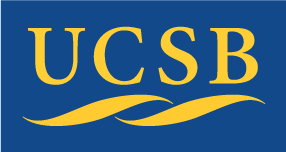|
Geometry, Topology, and Physics Seminar, Fall 2017
Part of the NSF/UCSB ‘Research Training Group’ in Topology and Geometry
Organizers:
Dave Morrison and
Zhenghan Wang.
Meets 4:00 - 5:30 p.m.
on selected
Fridays in South Hall 6635.
This fall, we shall explore a collection of loosely-related topics
(connections among which will be described on October 13): higher Chow
groups, dilogarithms, lines on the Dwork pencil of quintic threefolds, division algebras
over algebraic number fields, volumes of hyperbolic 3-manifolds, and mirror symmetry
for open strings.
Other Quarters: [
Fall, 2021;
Winter, 2020;
Fall, 2019;
Spring, 2018;
Winter, 2018;
Fall, 2017;
Spring, 2017;
Wnter, 2017;
Fall, 2016;
Spring, 2016;
Winter, 2016;
Fall, 2015;
Spring, 2015;
Winter, 2014;
Fall, 2013;
Fall, 2012;
Fall, 2011;
Winter, 2011;
Spring, 2010;
Winter, 2010;
Fall, 2009;
Spring, 2009;
Winter, 2009;
Fall, 2008;
Spring, 2008;
Winter, 2008;
Fall, 2007;
Spring, 2007;
Winter, 2007;
Fall, 2006
]
| October 13 |
Dave Morrison (UCSB)
Abstract:
We shall describe a puzzle which has arisen in the study of mirror symmetry for open strings:
certain calculated numbers, which naïvely would be expected to be integers,
are in fact irrational algebraic numbers.
The numbers in question are related to lines on the so-called Dwork pencil
of quintic threefolds,
which include a positive-dimensional family of lines, the "van Geemen lines."
An ongoing quest of mine, in collaboration with Hans Jockers and Johannes
Walcher, is to understand open mirror symmetry in this case.
As one step in our quest, we were led to consider higher Chow groups,
and have successfully made a computation in that context (which will be
the topic of a later lecture). The structure of that computation is
reminiscent of the way in which hyperbolic three-manifolds are built from
elementary pieces, so we are hoping to predict which hyperbolic three-manifold
should serve as the mirror of the van Geemen family
on the basis of this computation.
There are important connections between hyperbolic three-manifolds and
algebraic number theory which may lead to an explanation of the original
computation, including an a priori explanation of which number
number field the computation takes values in.
Audio; Lecture notes.
|
| October 20 |
No meeting
|
| October 27 |
Dave Morrison (UCSB)
Abstract:
This is the first of an occasional series of lectures explaining more of the details of the work on higher Chow groups, mirror symmetry, and hyperbolic 3-manifolds which I outlined two weeks ago.
The dilogarithm function has played an interesting role in various branches of mathematics over the past 25 years or so. It finds uses in number theory, in algebraic K-theory, in the study of hyperbolic manifolds, and in conformal field theory. The basic properties of Euler's dilogarithm function and its modern variants (e.g. the Bloch-Wigner function) will be surveyed. along with applications.
Audio; Lecture notes.
|
| December 8 |
Dave Morrison (UCSB)
Abstract:
The original Abel-Jacobi map from a complex algebraic curve to its Jacobian
was generalized by Griffiths to the following construction, also called the
Abel-Jacobi map. The pth intermediate Jacobian of an algebraic variety $X$
is the complex torus
$ (H^{2p+1,0}(X) + H^{2p,1}(X) + ... + H^{p+1,p}(X))^*/H_{2p+1}(X,\mathbb{Z}),$
where the integer $(2p+1)$-cycles define linear maps on de Rham cohomology
via integration.
Consider an algebraic cycle $Z$ on $X$ of (complex) dimension $p$ which is
homologous to zero. Then there is a $(2p+1)$-chain $\Gamma$ whose boundary is $Z$.
We can integrate $(2p+1)$-forms over $\Gamma$ and get answers which are
well-defined up to integrals over $(2p+1)$-cycles. Thus, $Z$ determines a
well-defined point in the pth intermediate Jacobian. The image only depends
on the rational equivalence class of $Z$, i.e., on the corresponding element
of the Chow group. This is Griffiths' version of the Abel-Jacobi map.
In this lecture, following a paper of Kerr, Lewis, and Müller-Stach,
we will present a refinement of the Abel-Jacobi map which is relevant when
$X$ has a natural mixed Hodge structure rather than a pure Hodge structure.
It involves some higher Chow groups which were originally defined by Bloch.
This is an ingredient in my work in progress (with Jockers and Walcher)
on higher Chow groups, mirror symmetry, and hyperbolic 3-manifolds.
Audio; Lecture notes v1; Lecture notes v2.
|
|
|



